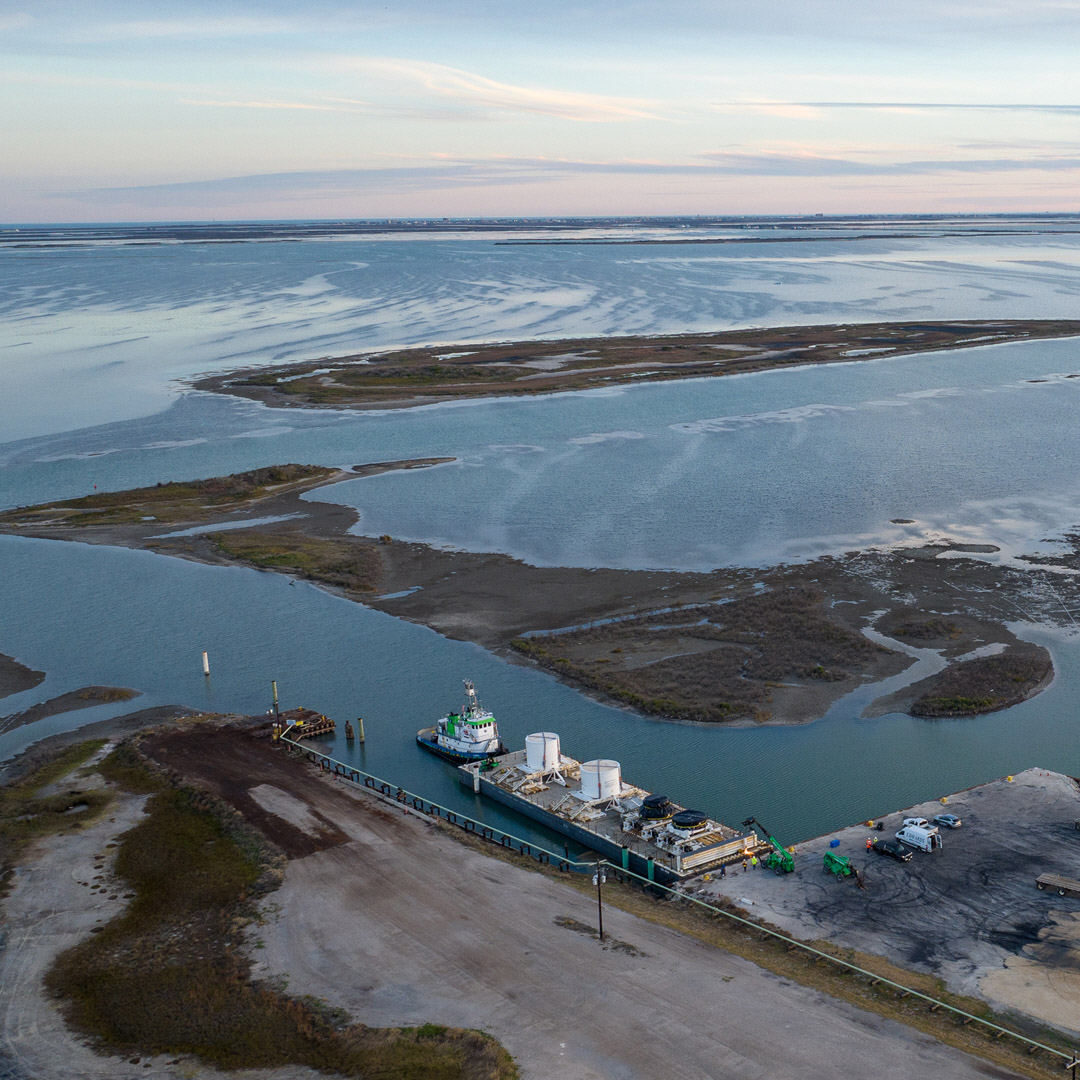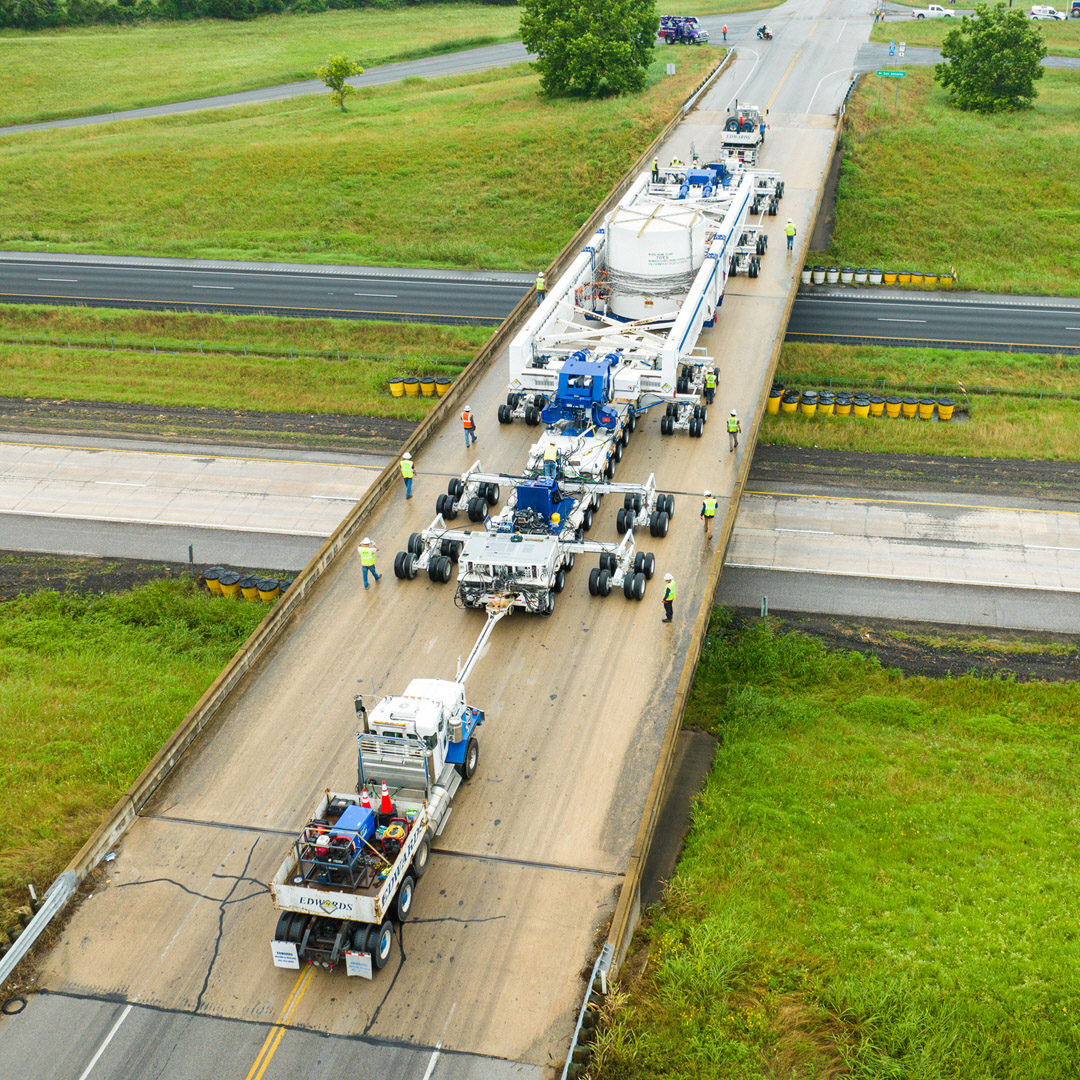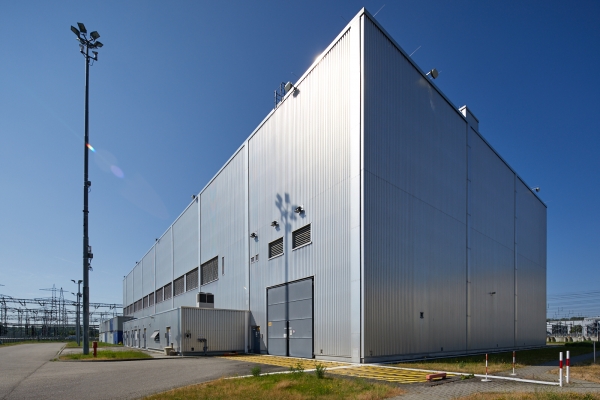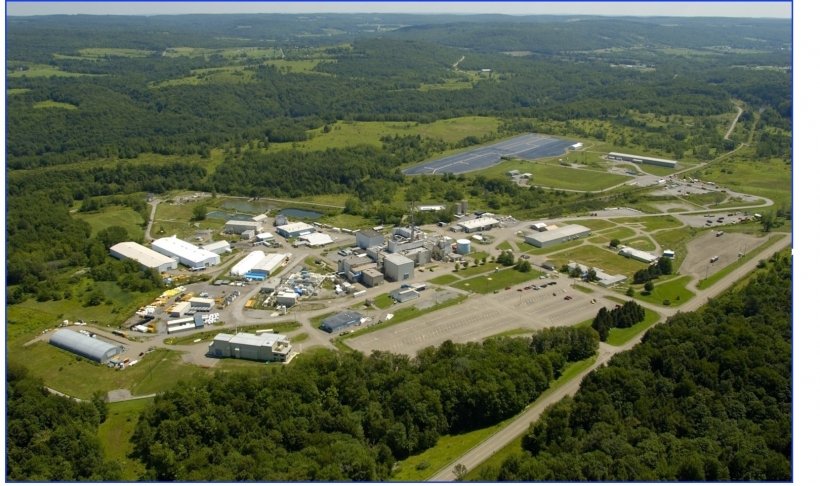Orano completes transport & disposal of Crystal River-3 RPV
Orano USA announced that it has recently completed the transportation and disposal of the dismantled Crystal River Unit 3 reactor using only four large packages, which were shipped more than 1,800 miles each by barge and multi-axle trailer from the nuclear power reactor’s site on Florida’s west coast to Waste Control Specialists’ disposal facility in Andrews County, Texas.

A barge with four packages arrives on the Texas coast after crossing the Gulf of Mexico from the Crystal River-3 decommissioning site in Florida. (Photo: Orano USA)

With wing dollies extended to further distribute the weight, the middle reactor pressure vessel package slowly progresses across a bridge. (Photo: Orano USA)
Using a patented process called “optimized segmentation,” the company completed the segmentation, packaging, and removal of the 35-foot reactor pressure vessel and its internal components from the reactor building in December 2023 in less than two years. The removal of the reactor’s cooling system components and the off-site shipment and final disposal of all generated low-level radioactive waste was completed in less than four years, the company said.
Decommissioning of Crystal River-3 is being done by Accelerated Decommissioning Partners, a joint venture of NorthStar Group Services and Orano USA, which took over the reactor’s operating license from Duke Energy in October 2020. A pressurized water reactor, Crystal River-3 permanently ceased operations in 2013.
The segmentation: Using Orano’s optimized segmentation process, the reactor’s internal components were segmented, removed, and strategically repacked inside the reactor vessel in three layers based on the pieces’ radioactivity. After filling the remaining spaces in the reactor vessel with an engineered grout—solidifying it into a single mass—the monolith was cut with diamond wire saws into three large pieces: top, middle, bottom. The fourth piece, the reactor head, had been removed previously.
The large top and middle sections were each sealed inside tailor-made shipping packages that were designed, licensed, and procured by Orano. The reactor head and bottom section were separately placed inside custom-designed supersacks. In comparison with these four packages, a traditional reactor vessel dismantlement can generate up to 80 transport packages, according to Orano.
As planned, only the middle section required a Nuclear Regulatory Commission–approved Type B package. The top and bottom sections and the reactor head were shipped under Department of Transportation’s industrial package regulations.
The route: All four packages were carried across the Gulf of Mexico to Texas aboard a single barge. The packages were then separately transported via truck to the WCS facility in West Texas. According to Orano, moving the large, heavy packages—ranging from 65 to 357 tons—across Texas involved close coordination and communication with regional and local law enforcement, jurisdictions, and regulators, plus the assistance of contractor Edwards Moving & Rigging company.
Over-the-road transport of the reactor’s repacked middle section, the largest and heaviest package at 357 tons, required it to be suspended in the middle of a 303-foot-long conveyance with two 16-axle trailers to distribute the weight evenly across the road surface. To avoid primary traffic corridors and limiting infrastructure, the middle and top packages’ transport followed a winding 980-mile route moving on average 8 miles per hour across the state.
When crossing bridges, the custom transport extended the axles with additional wheels to double the width of the trailer and further distribute the weight across multiple lanes of roadway. At other times, making a turn with the long trailer required the temporary removal of corner light posts and signage.
Along with the four reactor vessel packages, the Orano team conducted 10 disposal shipments by rail of the Crystal River-3 reactor coolant system, including a pressurizer, four reactor coolant pumps, and four motors, plus the reactor vessel’s integrated head assembly containing the control rod drives and service structure.
He said it: “The successful transportation of these four packages demonstrates Orano’s ability to safely and effectively plan, implement, and finish the optimized segmentation of a nuclear reactor in world-record time,” said Jean-Luc Palayer, chief executive officer of Orano USA. “With our expert team, this same concept of optimal waste disposal efficiency can be applied to any large, complex decommissioning project.”









